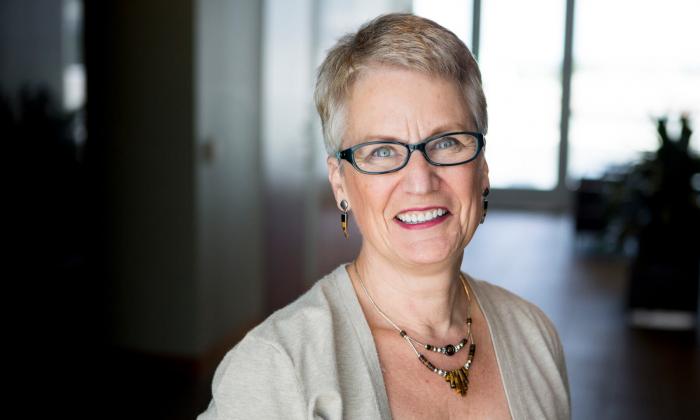At the end of July, a group of students from Marjory Stoneman Douglas High School came through Montgomery on a regional March for Our Lives tour. Before they left Florida, they had visited every congressional district to talk with people about gun violence and to register voters.
When we learned they’d be visiting the Civil Rights Memorial Center right across the street, Teaching Tolerance Deputy Director Adrienne van der Valk invited them to join us for lunch. There was just one caveat: We wanted to ask them some questions. Listening to them, hearing what they’d learned about advocacy and how they were connected to youth activists across the country gave us all a jolt of inspiration. We saw before us an emerging generation that is diverse, woke and ready to be heard.
They understand that marching isn’t enough, that policies and laws only change when people show up at the polls. And so they’ve organized, along with students around the nation, to register voters. It’s working: An analysis published in late July by the data firm TargetSmart reported a surge in registration rates among voters ages 18–29—not just in Florida, but across the country in states like Pennsylvania, New York, Virginia, Arizona and Nevada.
That’s important because, while Americans between the ages of 18 and 29 account for the largest population of eligible voters, voting participation among this group is far below that of other generations. About an overlapping group of young voters, Pew Research Center says, “Millennials have punched below their electoral weight” in recent years. U.S. Census Bureau data show that only 46 percent of 18–29-year-olds turned out to vote in the 2016 presidential election; among Baby Boomers and their elders, the turnout rate is about 70 percent.
And getting young people to vote will have an impact beyond any one election. People who vote when they are first eligible are more likely to become what political scientists call habitual voters, people who vote at each and every opportunity.
With a mission to “prepare youth as active participants in a diverse democracy,” Teaching Tolerance is also hard at work to increase voter registration and turnout. That’s why we’ve teamed up with Rock the Vote this fall on a set of Democracy Class lessons. It’s part of our Voting and Voices project, the aim of which is to activate young people to get out the vote in their cities and towns, no matter their party.
Voting is foundational for a healthy democracy, but it’s not a cure-all. After all, it’s possible (or likely, depending on where you live) that your candidate will lose. And many problems can’t be addressed by voting alone. This issue highlights several of those problems.
Our story on Matthew Shepard talks about the invisibility of violence against the LGBTQ community before his murder.
Our story about a girls’ basketball team in Ohio reveals all too plainly how racial bias can bring out the worst in our young people.
And our story on the school-to-deportation pipeline points to the daily dangers immigrant students face—even at school.
You’ll also find profiles of the five winners of the 2018 Teaching Tolerance Award for Excellence in Teaching. This summer, these amazing and inspiring teachers visited us, along with our advisory board.
“The main resistance to enslavement was survival.” —Hasan Kwame Jeffries
Professor Hasan Jeffries, chair of the advisory board for Teaching Hard History: American Slavery, also joined us this summer. He talked about teaching the hard history that is foundational to our national story, noting that much of U.S. history is a series of lost opportunities (e.g., Reconstruction). He urged us to “teach the long history of American repression, regression and lost opportunities.”
That’s hard and uncomfortable history; many teachers worry it will disempower students and make them angry or ashamed. But, as Jeffries reminded us, we’re not teaching slavery if we’re not teaching resistance to slavery. “You cannot teach these things without teaching African-American humanity and resistance to oppression in slavery and freedom.”
The hope, he told us, was in the resistance.
It reinforced to me that power comes in many forms. Voting is one, resistance another. Young people need to see them all.
—Maureen Costello


0 COMMENTS